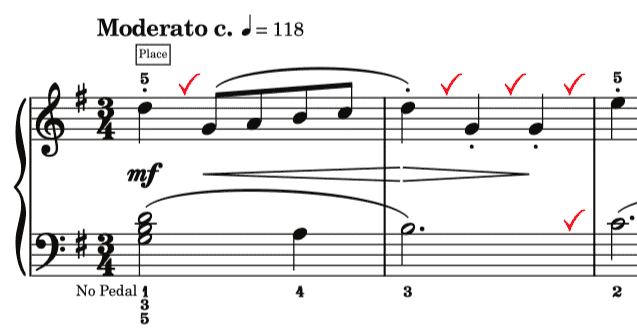Nothing in music is set in stone, fortunately, and thus reading on paper and trying to make sense of the ever-changing attributes of a musical articulation is no mean feat; tradition passed through the capable hands of an instructor is always paramount here, but various means of passing knowledge are in vogue today, such as trivial articles like the one you are reading right now, but that’s ok. So, please allow me to try to oversimplify the ever-defined Staccato:
Staccato is when a note sounds equal or shorter than half of its original value.
Still, is it always the case that a note that doesn’t sport its full sounding-length is indeed a staccato note?
Staccato differs from non-legato, mezzo-staccato and, of course, staccatissimo, even though it shares with them the same principle of duration-deprivation. However, what makes it different to its siblings and, more importantly, how can we be certain we are articulating it correctly in our piece instead of something else? Let’s find out a bit more:
Main characteristics:
1. To start with, for a staccato note to emanate the aesthetic of shortness it must not carry its full value—that goes without saying, of course, and every pianist would firmly make this assertion without qualification.
2. Then, a note should not sound “pointy” and sharp, because if it does, it would lean towards the staccatissimo sphere; so, yes, staccato is short but not that pointy.
3. The aftertaste of staccato (or aftertouch as we call it) should not linger around but should be prompt. So, pointy is again the word here, and as a general rule, we should avoid playing our staccato notes in that manner.
4. If we were forced to define staccato in “mathematical terms” we would say that it should occupy up to half of the length of a note’s full duration: If, for instance, we had a staccato on a crotchet, it should only be able to divide the crotchet in up to its half—no more, but it could be less. See example below:

Like many of my colleagues, in my annotated edition of Petzold’s minuets in G, I support that the
crotchets on the second bar of the G major minuet should be short to facilitate the sense of optimism
that this minuet arguably manifests—the facsimile, of course, does not explicitly indicate this universal editorial preference. Ideally, those notes should be held until we have reached to the midpoint of the note’s length—however, we must make sure here not to play non-legato if our intention is to play staccato. So, let’s see staccato graphically:

===========
Copyright © 1st of February 2020 by Nikos Kokkinis
—————–
All our musics for $29/yr (currently 25 titles)
✔️ One new work every month.
✔️ All our current sheet musics for free

